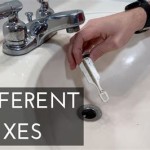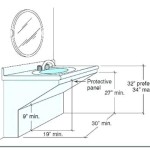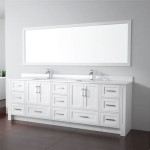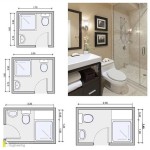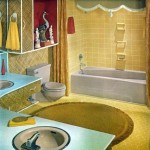Bathroom Sink Pop Up Stopper Removal: A Comprehensive Guide
The bathroom sink pop-up stopper is a ubiquitous feature in modern plumbing, designed to retain water for various washing and cleaning tasks. While generally reliable, these stoppers can become problematic, requiring removal and either cleaning, repair or replacement. Understanding the mechanism and the appropriate steps for removal is essential for homeowners and maintenance personnel alike. This article provides a comprehensive guide to removing different types of bathroom sink pop-up stoppers, addressing common issues and offering practical advice.
The need to remove a pop-up stopper can arise from several situations. A common issue is the accumulation of hair, soap scum, and other debris within the drain assembly. This buildup restricts water flow, leading to slow draining and potential blockages. In some instances, the stopper itself may become damaged, such as corrosion or breakage, necessitating its replacement. Furthermore, access to the drainpipe for cleaning or plumbing repairs may require the removal of the stopper assembly.
Before initiating any removal process, safety precautions are paramount. Adequate lighting is crucial to ensure clear visibility of the work area. It is also recommended to wear gloves to protect hands from grime and potential contaminants. In some instances, eye protection might be beneficial, particularly when dealing with corroded or fragile components. Finally, shutting off the water supply to the faucet is advised to prevent accidental flooding during disassembly.
Understanding the Pop-Up Stopper Mechanism
The pop-up stopper mechanism typically consists of three primary components: the stopper itself, a pivot rod, and a lift rod. The stopper is the visible part that seals the drain opening. The pivot rod is a horizontal rod that connects to the stopper beneath the sink. The lift rod is a vertical rod located behind the faucet that, when lifted or lowered, rotates the pivot rod, causing the stopper to either rise or fall, opening or closing the drain.
The interaction between these components is crucial to the proper functioning of the pop-up stopper. The lift rod, when manipulated, translates vertical motion into rotational motion of the pivot rod. This rotational motion, in turn, pushes or pulls on the bottom of the stopper, raising or lowering it. The angle and position of the pivot rod are critical for achieving a reliable seal and smooth operation. Many systems also incorporate a spring clip or similar fastener to hold the pivot rod securely in place.
Variations exist in the design of pop-up stopper mechanisms. Some stoppers are designed to be lifted straight up and out of the drain, while others require rotation or manipulation of the linkage below the sink. The specific design will influence the removal procedure, making it essential to identify the type of stopper before attempting removal.
Removing a Standard Pop-Up Stopper
The most common type of pop-up stopper is removed via manipulation of the pivot rod. The initial step involves locating the pivot rod beneath the sink. It is typically connected to the drainpipe assembly with a nut or clip.
The next step involves loosening or detaching the pivot rod from the drainpipe. If a nut is present, it should be loosened using an adjustable wrench. If a clip is used, it can usually be detached by hand or with the assistance of a small screwdriver. Care should be taken to avoid damaging the pivot rod or the drainpipe assembly during this process. Once loosened, the pivot rod can be carefully removed from the drainpipe.
With the pivot rod detached, the stopper is now free to be removed from the top of the sink. In many cases, the stopper can be simply pulled straight up and out of the drain opening. However, some stoppers may be held in place by debris or corrosion. If resistance is encountered, gentle rocking or twisting of the stopper may help to loosen it. Avoid applying excessive force, as this could damage the stopper or the drainpipe.
If the stopper remains stuck, it may be necessary to use a pair of pliers to gently grip the stopper and pull it upwards. A cloth can be placed between the pliers and the stopper to protect the finish from scratches. If the stopper is severely corroded or damaged, it may be necessary to break it into smaller pieces for removal. In such cases, safety glasses are highly recommended to protect the eyes from flying debris.
After the stopper is removed, the drainpipe should be thoroughly inspected for any remaining debris. A small brush or hooked tool can be used to remove any obstructions. It is also advisable to flush the drainpipe with water to ensure that it is clear of any loose particles.
Dealing with Alternative Stopper Designs
Beyond the standard pop-up stopper, other designs exist that require different removal techniques. One such design incorporates a spring-loaded mechanism that allows the stopper to be opened and closed by pressing down on it. Removing this type of stopper usually involves twisting it counterclockwise and then lifting it out of the drain opening. The exact procedure may vary depending on the specific model, so it is essential to consult the manufacturer's instructions if available.
Another variation involves a stopper that is directly connected to the lift rod, without a separate pivot rod. In this case, the lift rod must be disconnected from the stopper before it can be removed. This usually involves loosening a screw or clip that secures the lift rod to the stopper. Once disconnected, the stopper can be pulled straight up and out of the drain opening.
Some older sinks may feature a stopper that is simply a plug that fits into the drain opening. Removing this type of stopper is usually straightforward; it can be simply lifted out of the drain opening. However, these stoppers may become stuck due to debris or corrosion. In such cases, gentle rocking or twisting may be necessary to loosen them. The use of pliers may also be helpful, but care should be taken to avoid damaging the stopper or the drainpipe.
In each of these alternative designs, careful observation of the stopper mechanism is crucial for determining the correct removal procedure. Applying the wrong technique can damage the stopper or the drainpipe, leading to costly repairs.
Upon successful removal, the condition of each part should be carefully assessed. The stopper, pivot rod, and lift rod should be inspected for signs of wear, corrosion, or damage. If any of these components are found to be defective, they should be replaced. Replacement parts can typically be obtained from hardware stores or plumbing supply retailers. It is important to ensure that the replacement parts are compatible with the existing drain assembly.
Cleaning the removed parts is an essential step to prolonging the life of the mechanism. Use an old toothbrush and a mild detergent to scrub away accumulated debris. Stubborn deposits might require soaking in a solution of vinegar and water. Rinse all parts thoroughly before reinstalling or storing them.
Once the stopper, pivot rod, and lift rod have been inspected and cleaned, the assembly can be reinstalled. The reinstallation process is essentially the reverse of the removal process. The pivot rod should be reattached to the drainpipe, and the stopper should be placed back into the drain opening. The lift rod should then be reconnected to the pivot rod, ensuring that the stopper operates smoothly and seals the drain properly.
After reassembly, it is crucial to test the functionality of the pop-up stopper. Fill the sink with water and observe whether the stopper seals the drain effectively. Check for any leaks around the stopper or the pivot rod connection. If leaks are present, tighten the connections or replace any worn-out seals or washers. Also, verify that the lift rod operates smoothly and that the stopper opens and closes fully.
If difficulties arise during the removal or reinstallation process, consulting a professional plumber is advisable. Attempting complex repairs without the necessary expertise can lead to further damage and potentially costly repairs. A qualified plumber will have the tools and knowledge to diagnose and resolve any issues effectively.
Preventative maintenance can significantly reduce the frequency of pop-up stopper issues. Regularly flushing the drain with hot water and a mild detergent can help to prevent the accumulation of debris. Avoiding the disposal of excessive amounts of hair or other materials down the drain can also help to prevent blockages. Periodically inspecting the pop-up stopper mechanism for signs of wear or corrosion can allow for early detection and correction of potential problems.
By understanding the mechanism, following the proper removal and reinstallation procedures, and implementing preventative maintenance measures, homeowners can effectively manage their bathroom sink pop-up stoppers and ensure their reliable performance.

Quick Tip 26 Pop Up Stopper Sticks Misterfix It Com

How To Remove A Bathroom Sink Stopper Take Out Pop Up Drain From

Fixing Tricky Pop Up Drain Sink Stopper Mechanisms Efficient Plumber

How To Replace A Rusty Sink Drain Howtolou Com

Sink Maintenance How Do I Remove A Pop Up Drain

How To Fix Or Maintain Your Sink S Pop Up Mechanism

How To Replace A Sink Stopper Quick And Simple Home Repair
How To Get A Bathroom Sink Plug Removed When It Won T Un Quora

Bathroom Sink Popup And Stopper Problems
Install A Drain Stopper So The Is Removable
